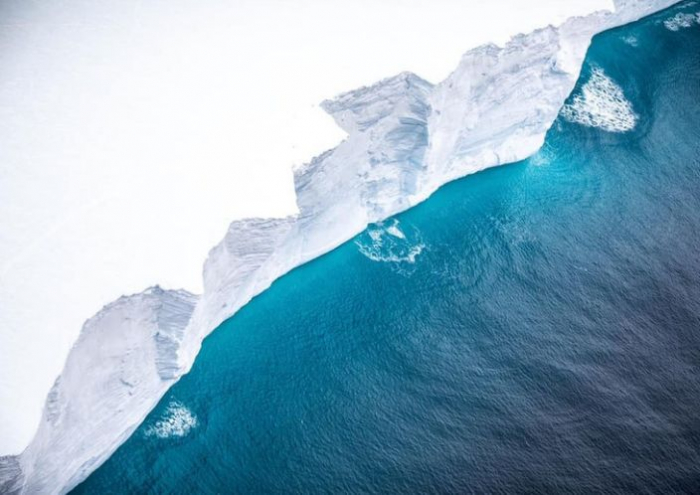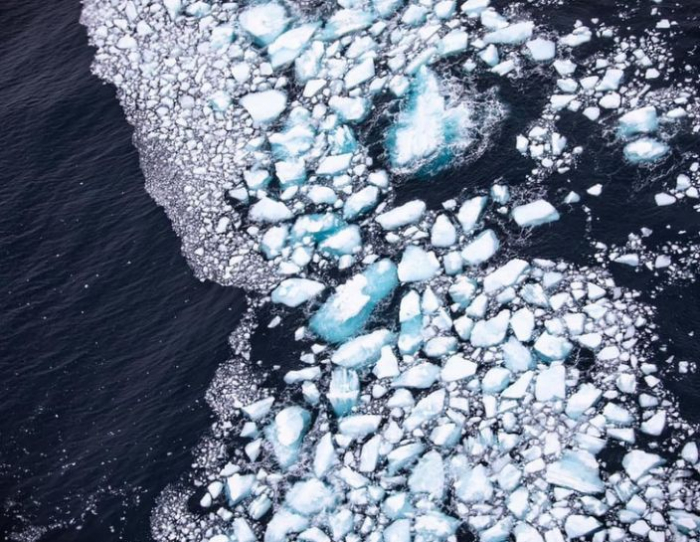An RAF aircraft has obtained images of the world's biggest iceberg as it drifts through the South Atlantic.
The A400m transporter flew low over the 4,200-sq-km block, known as A68a, to observe its increasingly ragged state.
The pictures reveal multiple cracks and fissures, innumerable icy chunks that have fallen off, and what appear to be tunnels extending under the waterline.
The Antarctic berg is currently bearing down on the British Overseas Territory of South Georgia.
A68a is now just 200km from the island and there is a real possibility it could become stuck in shallow coastal waters.

This cliff face is 30m high, but the berg probably reaches under water for 200m
The British Forces South Atlantic Island (BFSAI) reconnaissance flight was sent out to assess the situation.
"Guided by satellite tracking, the A400M can get under the weather and closer to the iceberg, enabling more detailed observations," Squadron Leader Michael Wilkinson, Officer Commanding 1312 Flt, said in a BFSAI Facebook posting.
"I know I speak on behalf of all of the crew involved when I say this is certainly a unique and unforgettable task to be involved in."
Satellite images acquired in recent weeks have also suggested that A68a's edges are crumbling rapidly.
Relentless wave action is breaking off countless small fragments, so-called "bergy bits" and "growlers". But some of the pieces being calved are significant objects in their own right and will need tracking because of the additional hazard they will now pose to shipping.
The A400m's new imagery - stills and video - will be analysed to try to understand how the berg might behave in the coming weeks and months.

There is now a mass of icy debris around A68a
Although currently heading straight at South Georgia, A68a is being carried in fast-moving waters that should divert the bloc in a loop around the southern part of the island.
There is considerable interest in whether the berg might then ground on the territory's continental shelf.
Should that happen, it could cause considerable difficulties for the island's seals and penguins as they try to get out to sea to forage for fish and krill.
When A68a broke away from an ice shelf in Antarctica in July 2017, it measured nearly 6,000 sq km - about a quarter of the size of Wales. At 4,200 sq km, it now has an area closer to that of an English county like Somerset.
Experts are surprised the iceberg hasn't lost more of its bulk. Many thought it would have shattered into several large pieces long before now.
More about: iceberg















































